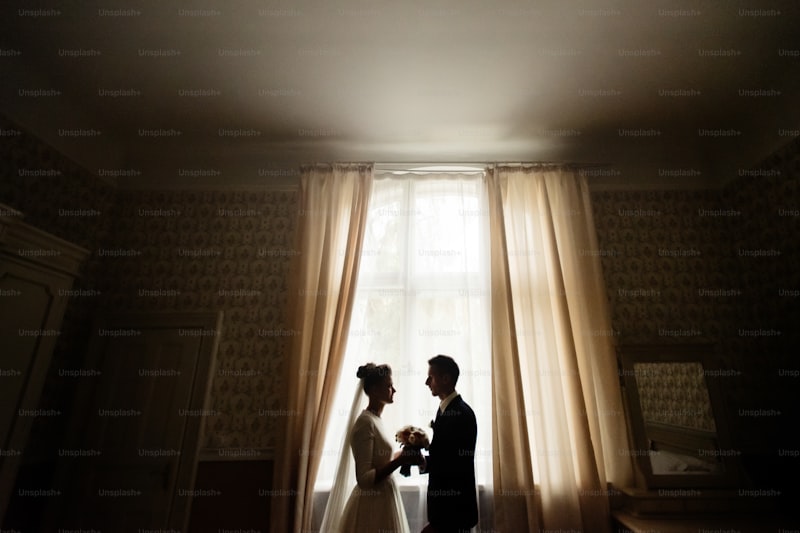Key Dates for Wedding Dress Fittings and Alterations: A Complete Guide
Planning a wedding is an exhilarating yet challenging experience, and one of the most crucial aspects is ensuring that the wedding dress fits perfectly. Understanding the key dates for wedding dress fittings and alterations can make all the difference. In this comprehensive guide, we will cover everything you need to know about scheduling your fittings, when to visit the tailor, and what to expect during the alteration process. By the end, you will be better equipped to ensure your dress looks stunning on your big day!
Why are Key Dates Important?
Knowing the timeline for wedding dress fittings and alterations is essential for several reasons:
- Timeliness: Weddings come with unique timelines that must be adhered to. Understanding when to schedule fittings helps avoid last-minute stress.
- Perfect Fit: Your body may change leading up to the wedding, and multiple fittings ensure the dress remains perfect.
- Stress Reduction: Having a clear schedule allows you to focus on other wedding details without worrying about your dress.
Timeline for Wedding Dress Fittings and Alterations
| Timeline Stage | Task | Recommended Completion Date |
| Wedding Dress Purchase | Choose the dress and place your order | 6-12 months before the wedding |
| First Fitting | Initial fitting to assess adjustments needed | 2-4 months before the wedding |
| Second Fitting | Try on dress after initial alterations | 1-2 months before the wedding |
| Final Fitting | Last adjustments and ensure the dress fits perfectly | 1-2 weeks before the wedding |
1. Wedding Dress Purchase
The journey begins with selecting the perfect wedding dress. Aim to finalize your purchase at least 6 to 12 months before your wedding. This timeline gives you ample time to browse different styles, visit various boutiques, and find a dress that reflects your personality. Once selected, place your order promptly to ensure the dress is custom-made for your fitting schedule.
2. First Fitting
The first fitting is typically scheduled 2 to 4 months before the big day. During this appointment, you will try on the dress for the first time since your initial order. This fitting is crucial, as it allows the seamstress to assess how the dress fits and identify areas that may need adjustments. Here are some things to keep in mind:
- Wear the undergarments and shoes you plan to wear on your wedding day.
- Take photos to remember how the dress looks at this stage.
- Communicate openly with your seamstress about any concerns or desired changes.
3. Second Fitting
About 1 to 2 months before your wedding, schedule your second fitting. At this stage, your seamstress will have made the initial alterations. You’ll try on the dress to ensure the adjustments are correct and that it flatters your figure as intended. If further modifications are required, this is the perfect time to address them.
4. Final Fitting
Your final fitting is often done 1 to 2 weeks prior to the wedding. Here, the dress should be nearly perfect. Expect to try it on with your bridal shoes and undergarments. This fitting is about ensuring every detail is flawless, so voice any last-minute concerns or adjustments. You'll want to leave this fitting feeling confident that your dress will look amazing.

Frequently Asked Questions
What if I lose or gain weight before my wedding?
It's common for brides to experience changes in weight leading up to the wedding. If you anticipate this, inform your seamstress during your fittings. They can suggest ways to alter the dress to accommodate changes, such as using a lace-up back or providing extra fabric for adjustments.
How many fittings will I need?
Most brides require at least two to three fittings, depending on the complexity of the dress and the amount of alteration needed. Your seamstress may recommend additional fittings if significant adjustments are made.
How should I prepare for my fittings?
Preparation can make your fittings more effective. Here are a few tips:
- Bring the shoes and accessories you plan to wear on your wedding day to get an accurate feel of the overall look.
- Wear undergarments similar to what you'll wear on the big day.
- Take notes regarding what you like or dislike about the fit to discuss with your seamstress.
Are alterations included in the purchase price of the dress?
It often depends on the shop from which you purchase the dress. Some boutiques may include a certain number of fittings or alterations in the price, while others charge separately. Clarify this before purchasing.
Final Thoughts
Understanding the key dates for wedding dress fittings and alterations is paramount to ensuring your dress fits perfectly. Start early, communicate openly with your seamstress, and maintain a clear timeline to alleviate stress during this exciting time. Keep in mind the fluctuations in body size, properly prepare for each fitting, and don’t hesitate to ask questions throughout the process. By following these guidelines, you’ll walk down the aisle in a stunning, perfectly tailored dress that leaves a lasting impression.
Remember, your wedding day is one of the most memorable days of your life, and with the right planning, your dress will be a key highlight. Happy planning!